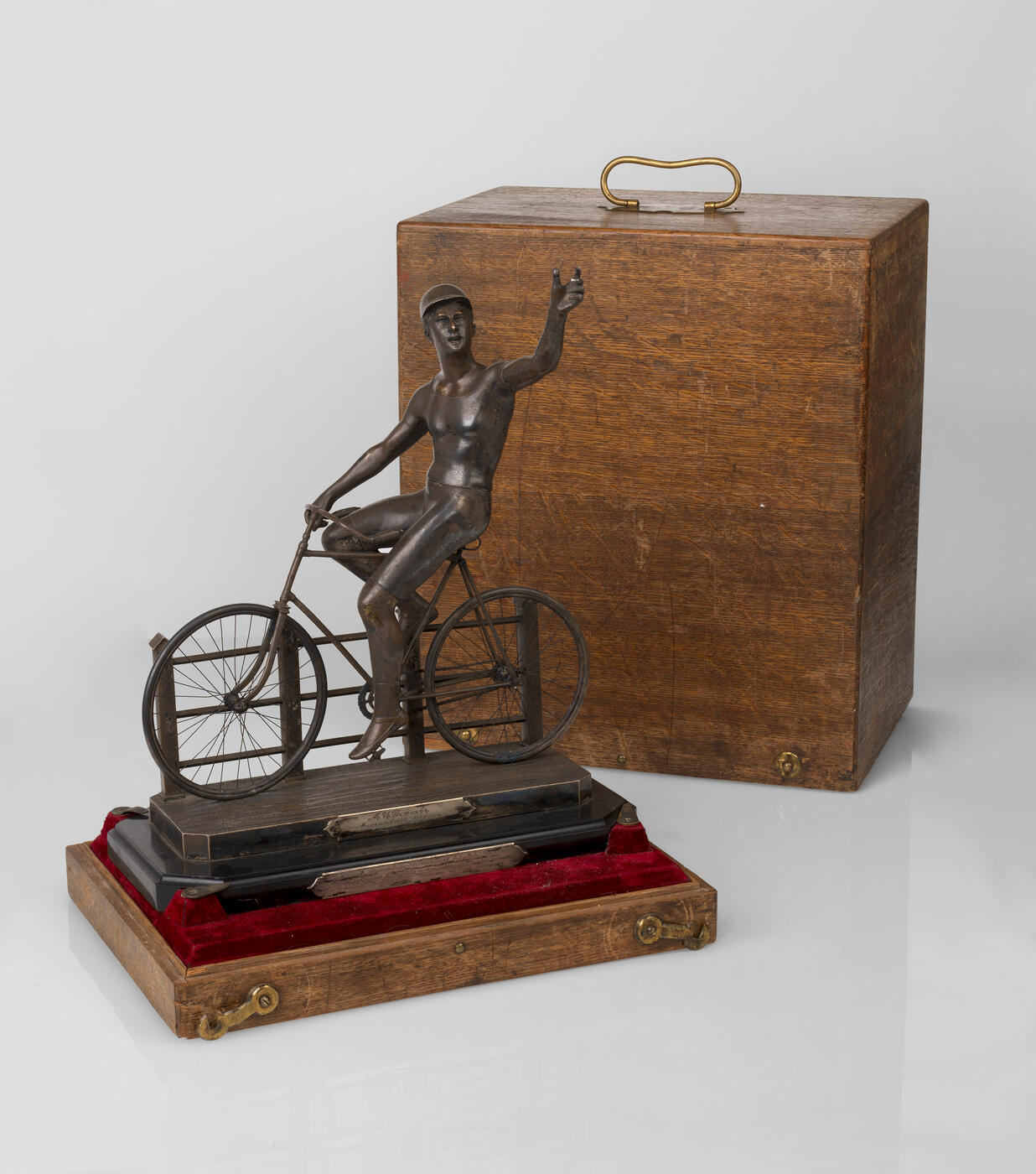6 June 2018 Russian Art Auctions
6 June 2018

327.
A Silver Commemorative Composition
27,000-35,000 GBP
A. LUBAVIN, ST PETERSBURG, 1896
40 by 30 cm (sculpture), 40.5 by 33 cm (case).
The offered silver composition produced at the renown St Petersburg company of Alexander Lubavin was intended as a prize in honour of Grand Duke Sergei Mikhailovich to the best bicycle-rider of the North of Russia in 1896 and the champion of the Mikhailovsky manege race as per the engraving on the front of the base.
Won by the famous Russian sportsman M. Djakov on the 9th of March 1896 it is emblematic of its era. The end of the 19thcentury is marked by the society's eagerness for everything innovative and the First Bicycle-Riders' society of Russia was organised already in 1883 in Tsarskoe Selo. Amongst the prominent sponsors was Grand Duke Sergey Mikhailovich who like many in the aristocratic circles of the époque shared the fashionable enthusiasm for bicycles.
M. Djakov became a member of the Tsarskoe Selo bicycle club and after a year of practising won his first race in the park of Tsarskoe Selo. In 1893 he won the title of the best Russian bicycle rider for the distance of 7.5 verst (Russian unit of distance equal to 1.067 km) - the most prestigious race at the time with an all-Russia record and was given a silver goblet. In the next season he broke the country record safeguarding his champion title until 1895.
In 1896 the Tsarskoe Selo bicycle club sent Djakov to London for Open Championship of England where he secured the sensational victory. That was the biggest international tournament of the time, during which Djakov established two world records. All in all during his sports career Djakov established more than ten world records and out of 300 official races he failed to come first only three times. In 1905 M. Djakov was personally ennobled.
The factory of silver objects founded by Aleksandr Venedicktovich Lubavin in 1893 existed in St. Petersburg up until the 1917 revolution and was one of the most fashionable and well known factories alongside other grand names such as Fabergé, Ovchinnikov, Khlebnikov. In 1900 Lubavin got a title of supplier to the Imperial Court and in 1905 it was kept by his son Nikolai Aleksandrovich, who continued the dynasty business.
Remarkably the sculpture is very similar to known portraits of Djakov. The outstanding quality and the unique background make this piece not only a high quality testament of the Russian decorative arts of the end of the 19th century but also a rare and exquisite object of history of Imperial Russia.
Notes on symbols:
* Indicates 5% Import Duty Charge applies.
Ω Indicates 20% Import Duty Charge applies.
§ Indicates Artist's Resale Right applies.
† Indicates Standard VAT scheme applies, and the rate of 20% VAT will be charged on both hammer price and premium.